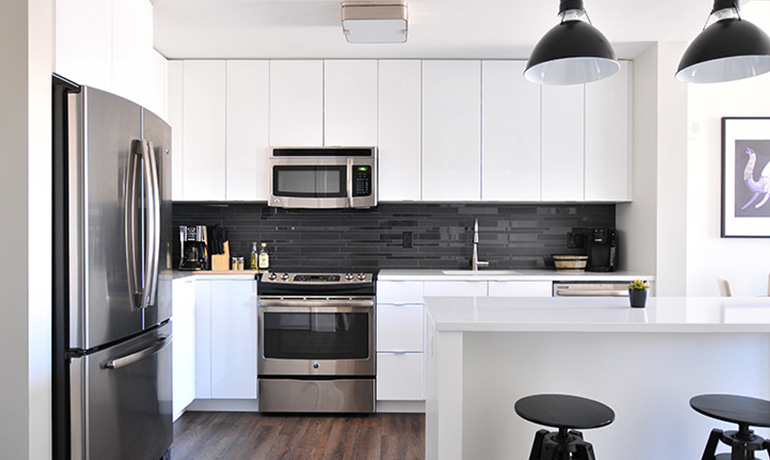Setting Up Multiple Monitors on MacBook Pro
Setting up multiple monitors on your MacBook Pro can boost your productivity and multitasking abilities. With the right setup, you can connect three monitors to your MacBook Pro, enabling you to have multiple windows open at once and switch between them effortlessly. Here’s a step-by-step guide to help you set up three monitors on your MacBook Pro.
-
Check compatibility: Before you start, make sure your MacBook Pro supports multiple monitors. Most recent models, like the MacBook Pro (2018 and later), have Thunderbolt 3 ports that allow for multiple monitor connections. Check your MacBook Pro’s specifications or consult Apple’s official website to confirm compatibility.
-
Gather necessary equipment: To set up three monitors, you’ll need three external monitors, a Thunderbolt 3 dock or adapter, and the appropriate cables. Ensure the monitors have compatible ports, such as HDMI or DisplayPort, and that you have the necessary cables to connect them to your MacBook Pro.
-
Connect the monitors: Start by connecting one monitor to your MacBook Pro using the Thunderbolt 3 dock or adapter. Make sure the monitor is powered on and select the correct input source. Your MacBook Pro should automatically detect the monitor once connected. Repeat this process for the remaining two monitors, connecting them to the available Thunderbolt 3 ports.
Tip: To optimize your setup, consider arranging the monitors according to your workflow. Go to “System Preferences” > “Displays” and arrange the monitors based on their physical placement. Adjusting the resolution and scaling options can also ensure a seamless and visually pleasing experience across all three monitors.
Step-by-Step Guide to Enhance Productivity
Now that you’ve successfully set up three monitors on your MacBook Pro, it’s time to maximize your workflow. Here’s a step-by-step guide to help you make the most of this enhanced productivity setup:
-
Configure display settings: Customize your display settings by going to “System Preferences” > ”Displays.” Here, you can adjust the resolution, scaling, and arrangement of your monitors. Experiment with different settings to find what works best for you and your workflow.
-
Organize your workspace: Take advantage of the additional screen space by organizing your windows across the three monitors. For example, you can have your email client open on one monitor, your web browser on another, and your project management software on the third. This allows for easy multitasking and quick access to different applications.
-
Use Spaces and Mission Control: macOS offers built-in features like Spaces and Mission Control that can further enhance your productivity. Spaces allow you to create virtual desktops with their own set of windows and applications. Mission Control provides an overview of all your open windows, making it easy to switch between them. Utilize these features to keep your workspace organized and streamline your workflow.
Tip: Consider investing in a monitor stand or mount to optimize the ergonomics of your setup. Position the monitors at eye level and ensure they are at a comfortable distance from you to reduce strain on your neck and eyes.
By following this step-by-step guide, you can set up three monitors on your MacBook Pro and enhance your productivity. Remember to experiment with different settings and find a setup that works best for you. With the right configuration, you’ll be able to seamlessly multitask and efficiently manage your workflow.
It is no secret: if you’re the type of individual who needs to multitask and become a power user, then you’ll be looking for the latest and greatest gadgets to help you do just that. One area of increased productivity lies in the capability to utilize multiple monitors on your MacBook Pro. While you’re already blessed with a substantial screen with high-resolution display, having the ability to attach up to three external screens and use them simultaneously is the ultimate way to take your productivity to the next level.
In this ultimate guide, we will be taking a closer look at everything you’ll need to know about setting up three monitors on a MacBook Pro. This includes the correct equipment, whether they will be compatible, plus the appropriate steps to take to ensure everything runs seamlessly.
To get started, let’s first take a look at the necessary hardware and type of connections you will need. Even though the majority of MacBook Pro models feature a range of ports, it is only the 15-inch and 17-inch models with a Retina display that feature multiple Thunderbolt ports. This will enable you to connect up to three monitors that have a high refresh rate of up to two Thunderbolt displays. Other connections supported are mini-DisplayPort and HDMI port. As such, you will need to make sure the monitors you intend to use are equipped with a specific connection type.
It is also essential to check the graphics card of your MacBook Pro for compatibility. This can be done with the Apple System Profiler. The program will be able to show the capabilities of your graphics card, which will help you understand what type of connection and the number of monitors it is compatible with.
Next, the actual step of connecting the monitors will vary depending if you wish to strictly use one connection type, or a combination of different ones. For example, if you want to use two Thunderbolt displays and one HDMI device, this will your MacBook Pro will need to feature two Thunderbolt ports and one HDMI port. All connections will need to be made before power is connected to ensure there are no issues.
Once the physical connections are made, the new displays will automatically be detected and will begin to show whatever is available on the main display of the MacBook Pro. The extended desktop will appear, where you can customize its behaviour and move windows across different monitors. It is also possible to specify the primary display, so that the desktop and menu bar are mirrored on the other screens instead.
Using three monitors on your MacBook Pro is a powerful way of increasing productivity, enabling you to be more efficient with your work. By following the right steps, and ensuring the correct hardware & connections are in place, you will be able to set up three monitors with minimal effort.


